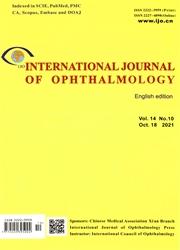基于多源无域适应的糖尿病视网膜病变识别技术
IF 1.9
4区 医学
Q2 OPHTHALMOLOGY
引用次数: 0
摘要
目的:为了解决糖尿病视网膜病变(DR)识别中的数据标注困难、数据隐私以及深度学习方法所需的大量标注数据等挑战,本研究旨在开发一种无源域适应(SFDA)方法,以便从无标注数据中高效识别DR。该方法整合了多个源模型,这些模型由相同的源域训练而来,为未标记的目标域生成合成伪标签。此外,该方法还采用了软最大持续性最小化项,以最小化源域和目标域之间的类内距离,最大化类间距离。结果:对所提出的模型进行了评估,在可参考性和正常/异常 DR 识别任务上分别获得了 0.8917 和 0.9795 的 F1 分数,结果令人满意。结论:多 SFDA 方法为克服 DR 识别中的难题提供了一种有效的方法。该方法不仅解决了数据标记和隐私问题,还减少了深度学习方法所需的大量标记数据,使其成为糖尿病患者早期检测和视力保护的实用工具。本文章由计算机程序翻译,如有差异,请以英文原文为准。
Diabetic retinopathy identification based on multi-source-free domain adaptation
AIM: To address the challenges of data labeling difficulties, data privacy, and necessary large amount of labeled data for deep learning methods in diabetic retinopathy (DR) identification, the aim of this study is to develop a source-free domain adaptation (SFDA) method for efficient and effective DR identification from unlabeled data.
METHODS: A multi-SFDA method was proposed for DR identification. This method integrates multiple source models, which are trained from the same source domain, to generate synthetic pseudo labels for the unlabeled target domain. Besides, a softmax-consistence minimization term is utilized to minimize the intra-class distances between the source and target domains and maximize the inter-class distances. Validation is performed using three color fundus photograph datasets (APTOS2019, DDR, and EyePACS).
RESULTS: The proposed model was evaluated and provided promising results with respectively 0.8917 and 0.9795 F1-scores on referable and normal/abnormal DR identification tasks. It demonstrated effective DR identification through minimizing intra-class distances and maximizing inter-class distances between source and target domains.
CONCLUSION: The multi-SFDA method provides an effective approach to overcome the challenges in DR identification. The method not only addresses difficulties in data labeling and privacy issues, but also reduces the need for large amounts of labeled data required by deep learning methods, making it a practical tool for early detection and preservation of vision in diabetic patients.
求助全文
通过发布文献求助,成功后即可免费获取论文全文。
去求助
来源期刊

International journal of ophthalmology
Medicine-Ophthalmology
CiteScore
2.50
自引率
7.10%
发文量
3141
审稿时长
4-8 weeks
期刊介绍:
· International Journal of Ophthalmology-IJO (English edition) is a global ophthalmological scientific publication
and a peer-reviewed open access periodical (ISSN 2222-3959 print, ISSN 2227-4898 online).
This journal is sponsored by Chinese Medical Association Xi’an Branch and obtains guidance and support from
WHO and ICO (International Council of Ophthalmology). It has been indexed in SCIE, PubMed,
PubMed-Central, Chemical Abstracts, Scopus, EMBASE , and DOAJ. IJO JCR IF in 2017 is 1.166.
IJO was established in 2008, with editorial office in Xi’an, China. It is a monthly publication. General Scientific
Advisors include Prof. Hugh Taylor (President of ICO); Prof.Bruce Spivey (Immediate Past President of ICO);
Prof.Mark Tso (Ex-Vice President of ICO) and Prof.Daiming Fan (Academician and Vice President,
Chinese Academy of Engineering.
International Scientific Advisors include Prof. Serge Resnikoff (WHO Senior Speciatist for Prevention of
blindness), Prof. Chi-Chao Chan (National Eye Institute, USA) and Prof. Richard L Abbott (Ex-President of
AAO/PAAO) et al.
Honorary Editors-in-Chief: Prof. Li-Xin Xie(Academician of Chinese Academy of
Engineering/Honorary President of Chinese Ophthalmological Society); Prof. Dennis Lam (President of APAO) and
Prof. Xiao-Xin Li (Ex-President of Chinese Ophthalmological Society).
Chief Editor: Prof. Xiu-Wen Hu (President of IJO Press).
Editors-in-Chief: Prof. Yan-Nian Hui (Ex-Director, Eye Institute of Chinese PLA) and
Prof. George Chiou (Founding chief editor of Journal of Ocular Pharmacology & Therapeutics).
Associate Editors-in-Chief include:
Prof. Ning-Li Wang (President Elect of APAO);
Prof. Ke Yao (President of Chinese Ophthalmological Society) ;
Prof.William Smiddy (Bascom Palmer Eye instituteUSA) ;
Prof.Joel Schuman (President of Association of University Professors of Ophthalmology,USA);
Prof.Yizhi Liu (Vice President of Chinese Ophtlalmology Society);
Prof.Yu-Sheng Wang (Director of Eye Institute of Chinese PLA);
Prof.Ling-Yun Cheng (Director of Ocular Pharmacology, Shiley Eye Center, USA).
IJO accepts contributions in English from all over the world. It includes mainly original articles and review articles,
both basic and clinical papers.
Instruction is Welcome Contribution is Welcome Citation is Welcome
Cooperation organization
International Council of Ophthalmology(ICO), PubMed, PMC, American Academy of Ophthalmology, Asia-Pacific, Thomson Reuters, The Charlesworth Group, Crossref,Scopus,Publons, DOAJ etc.
 求助内容:
求助内容: 应助结果提醒方式:
应助结果提醒方式:


